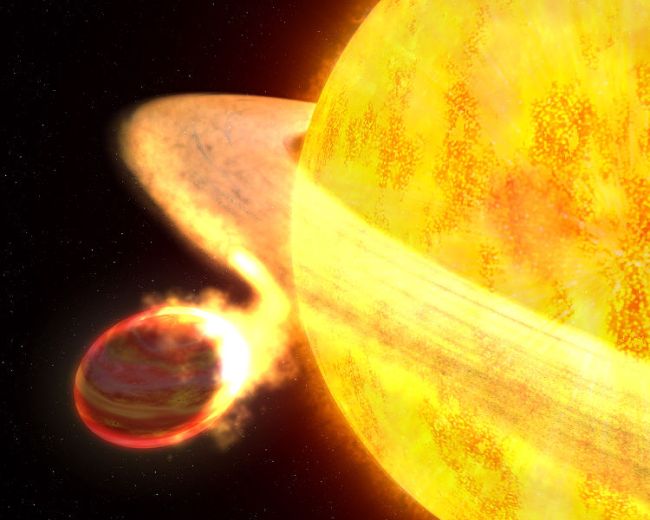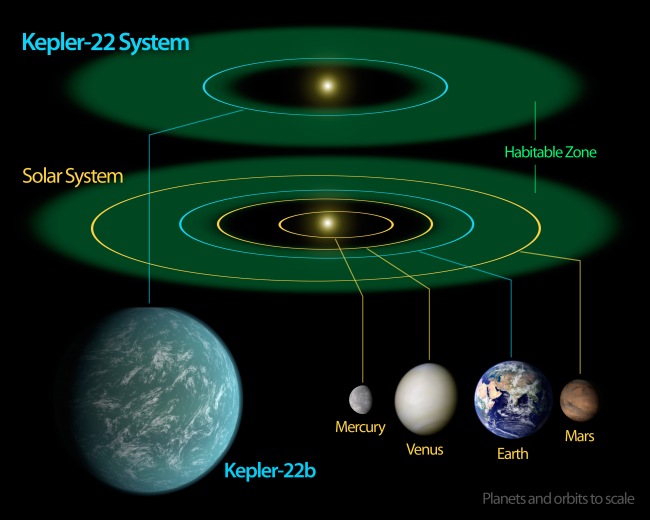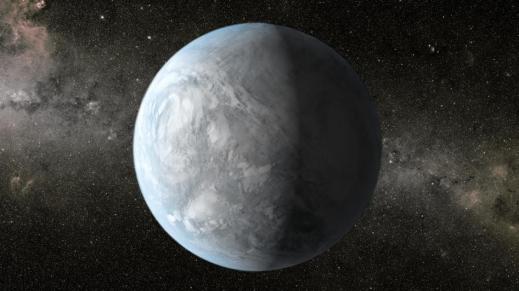The Search for Habitability Outside the Solar System
People have been concerned with the heavens for millennia. Only recently have we been able to satisfy our curiosity through careful observation and exploration. In the past 100 years, gigantic leaps have been made in space technology. Starting with the space race, explorative and satellite machinery has been developed that allow enhanced access to the stars, telescopes have become more powerful and better equipped to study the sky, and our inquisitiveness has only increased.
With our increasing knowledge of the cosmos, increased interest has been sparked in the search for extraterrestrial life. The 1950’s saw the rise of the science fiction novel. Stories of UFOs have become part of popular culture. It is only natural that we wonder, “Are we alone out there?”
The search has now been expanded to a whole branch of astronomy. Within the solar system, probes and landers and other spacecraft have been sent to study our nearest neighbors. We now have much information not only about the seven other planets in our solar system, but also about their satellites, comets, asteroids, the sun, and other objects close to us. This has turned up some promising results. We still are not sure if these worlds harbor life but we certainly know much more about their habitability.
Looking beyond our own solar neighborhood, the cosmos reveals itself in astonishing fashion. We start to wonder, if our star can harbor life, what about the billions of others in our galaxy, in other galaxies? This is where the search for extrasolar planets comes in. This is the search for bodies of mass (namely planets) orbiting the stars around us. The first discovery of these so-called “exoplanets” was in 1995. Since, hundreds more have been found and possibly thousands have been detected (Schneider). When you break it down, if planets are really so common, could not life be as well?
The thing is, not every star system is like our own. There are many different types of stars. In the main sequence, or long-lived, hydrogen-fusing portion of a star’s life, there are types OBAFGKM. O and B stars are too short-lived to have stable planets form, nevertheless life. Types A and F might live long enough to see very simple life evolve, but nothing more. Our star is a G star, and seems to work perfectly for us! K and M stars live the longest, but they are also much smaller and thus have only small habitable zones (Bennett and Shostak).
Speaking of habitable zones, what exactly are they? A habitable zone is a region around a star where a planet could exist that would be similar to Earth in atmosphere, temperature, etc. An important (and exciting) part of extrasolar planetary searches is finding our how similar an exoplanet is to our own. Many types of planets have been found. Very few are Earth-like in size and position around a star. Others range from “hot Jupiters,” or gas giants orbiting close to a star, to frozen wastelands to planets orbiting binary star systems (Bennett and Shostak)! It is easy to see how one could quickly become enthralled with the search.
Now then, how exactly does one find these planets? There are actually a variety of methods used that fall under two categories: direct and indirect detection. Direct detection is discovering planets by directly imaging them. This is preferable because you can discover a wider range of properties about the planet, but it is much harder to do. What are the chances that you will point your telescope at a star and happen to catch a planet in the viewfinder? Not likely, I will tell you. Nearly all discoveries of exoplanets up until now have been via indirect detection.
Indirect detection is finding an exoplanet not by seeing it, but by seeing its effects on the things around it. This is because although one thinks of a star as having an overpowering gravitational force in a start system (which it does, for the most part), planets still exert small gravitational tugs on the star. These effects, if observed carefully, can indicate the presence of a planet.
There are a few ways of detecting these effects: The star and all its planets orbit a center of mass that is usually very close to the substantial star. This means that the star actually “wobbles” a bit. The astrometric technique requires studying the position of stars over long periods of time to look for changes in its movement. Similarly, the Doppler technique utilizes the Doppler Effect to observe redshifts and blueshifts in a star’s spectrum, which indicates the slight pulling a planet exerts on its star. You can also measure a star’s brightness and look for dips in the measurements. This can indicate a planet that it “in transit” or passing in front of its star. Other indirect detection techniques include gravitational lensing, pulsar timing, etc. (Bennett and Shostak).

Figure 1. The Doppler Effect. Redshift and Blueshifts of Celestial Bodies. Palmer.
So far, 1010 exoplanets have been confirmed to exist (as of October 2013). All these have been found within the last 20 years, giving credence to the extent of innovation that has occurred in the last century (Schnieder). Of these, our closest neighbor is the planet Alpha Centauri Bb: a rather hellish world rather close to home. Because of its proximity, it will be the focus of the rest of this paper.
Alpha Centauri Bb: Lucifer’s Version of Earth?
To say this world is made up of fire and brimstone would not be an exaggeration. Located only 4.27 light years away, Alpha Centauri Bb is the closest exoplanet to Earth, and quite a hostile one at that. It exists in a multiple star system (3 stars, actually!). It orbits about Alpha Centauri B, a star of K1 spectral type. Alpha Centauri A is a G2 star (like our Sun). The two orbit in a binary system with the third star, Alpha Centauri C or Proxima Centauri (because it is the closest start to Earth), gravitational bound to the system and orbiting around Alpha Centauri AB at a distance of 13,000 AU. Together, Alpha Centauri A and B make up the third brightest star visible in the night sky (Rigel Kent in the constellation Centaurus) (“Alpha Centauri”).

Firgure 2. Rigel Kent. The 3rd brightest star in the sky. ESO. Palmer.
Stable orbits have been proved to be possible around binary systems. With Alpha Centauri A and B’s distance from each other changing from about Saturn to Pluto’s orbital distances, Alpha Centauri A is not supposed to affect the planet. This is most likely because of Alpha Cenaturi Bb’s proximity to its host star. It orbits at a distance of only 0.042 AU!!! No wonder this place is so hot! In fact, temperature estimations show its surface to maintain a temperature of a whopping 1500K (Torres)!
The surface temperature of an exoplanet can be found by using the equilibrium temperature equation
4πσTeq^4 = [(1-A)L] / (4d^2) [1]
where Teq is the equilibrium temperature, σ is the Stefan-Boltzmann constant, A is the albedo of the planet, L* is the luminosity of the star, and d is the orbital distance of the planet from the star. The luminosity of Alpha Centauri Bb is 44.5% of the luminosity of the Sun (it is, after all, only a K star).

Figure 3. Alpha Centaury Bb. Torres.
Habitability on a Lava World:
Being so hot, we can assume the place is hostile to life. No water would be able to exist there. The only liquid would be lava! It would actually quite resemble the planet of Mustafar from Star Wars: Episode III- Revenge of the Sith. But just to be sure, let us check to see if its orbit falls within the habitable zone for its star. The equations are
D(inner) = 0.95 (L^(1/2)) [2]
D(outer) = 1.4 (L^(1/2)) [3]
where Dinner and Douter are the distances (in AU) of the inner and outer edges of the habitable zone and L is the luminosity of the star. By inserting .445 for the luminosity, we find that the habitable zone falls between 0.634 AU and 0.934 AU. Unfortunately for Alpha Centauri Bb, it definitely does not fall in the habitable zone.

Figure 4. Habitability in the Alpha Centauri System. Torres.
This is too bad. If only it were a little farther out, it might be considered a potentially habitable Earth-like planet. It is a terrestrial planet (made up of rock) that is only 1.13 Earth masses! The Rigel Kent star system was also only formed 1.5 billion years before our own, which is not too large of an age distance (astronomically speaking) (Overbye).
If the temperature and position relevant to habitability zone and star (far too hot and close to support organic compounds) weren’t nails in coffin for life on Alpha Centauri Bb, consider the fact that the wavelength most emitted from Alpha Centauri B (which is so close, it would look 300 times brighter than the Sun from the surface of the planet) is in the harmful X-ray spectrum. Due to its position, it also is most likely tidally locked, leading it to have a permanent dark and light side (one side much hotter with all the sunlight). This also implies that it would not have a fast enough rotation to produce a protective magnetic field and, accompanied by frequent solar flaring from Alpha Centauri B, would make it impossible for the planet to retain an atmosphere (Wall).
Well, stars change over time, do they not? Could Alpha Centauri Bb be potentially habitable in the future? Alas, it cannot. Since its star (both its stars, actually) is in its main sequence, its next stage in stellar evolution is becoming a red giant. This means as the star’s hydrogen fuel is slowly consumed, it will expand and cool to reach hydrogen on the surface, most likely engulfing the planet rather quickly. This is similar to Earth’s future with our star, though we were lucky enough to be placed far enough outside the star that we still have half of a billion years before we need to worry (Bennett and Shostak).
Life on Alpha Centauri Bb?
So, though it is highly unlikely life could arise on this planet, if it did, what would it be like? Sadly, the case is so desperate for Alpha Centauri Bb, trying to imagine life arising on it with our current understanding of biology is impossible. Instead of life arising on it, however, one could imagine life visiting the planet instead. Long have people traveled to exotic locations to exploit natural resources. From colonial America to the movie Avatar, harvesting materials that are potentially useful has always been a part of the human endeavor. Even now, people would like to venture into the outer solar system to harvest compounds from the Jovian planets that would be valuable on Earth.

Figure 5. Mustafar. Star Wars: Episode 3- Revenge of the Sith. Lucas Films.
Why, then, could an alien race not do the same for Alpha Centauri Bb? When imagining life there, I imagine an advanced civilizations traveling the stars and landing a fleet of ships at the planet. There they would descend to the surface (or at least lower machinery) and mine elements there. Their endeavor would return valuable materials, perhaps silicon, to them above where they would then process it and return to their home planet, colony, etc.
If one were to imagine human travel there, I would see this mining company, let us call it Galactic Mining, Inc. advertising jobs there. These mining jobs would probably only be taken by the lowest people in modern society and may be forced and penile labor for criminals. It would be extremely dangerous and fatalities would most likely be common. Not to mention, daily life would be cramped in a space ship (unless the alien race somehow managed to make a ship bigger on the inside than it is on the outside). Only the truly desperate would go to work in this star system.
So you are Telling Me, All this Could be Made Up?
The problem with detecting exoplanets is that it is a fickle business. Alpha Centauri Bb was found using the radial velocity method, or detecting small shifts in the star’s spectrum due to the gravitational pull of the planet. After four years of careful observation, its discovery was announced in October 2012. However, many scientists still debate its existence! It is possible that some of the data was actually caused by extra “noise” from other stars and the telescopic instruments themselves. The planet has never been observed to transit its host star, leading many to argue against its existence (Palmer).

Firgure 6. Alpha Centauri Bb about to transit Alpha Centauri B. L. Calcada/European Southern Observatory, via Associated Press. Overbye.
However, assuming it does exist, how did astronomers infer all this information from a slight wobble in a star? To find the data, they used a variety of equations to come up with information about the planet. The first is Newton’s Version of Kepler’s 3rd Law:
p^2 = [4(π^2)(a^3)] / [G(M1)(M2)] [4]
where by taking the period of the planet (p), or how often is completes one orbit around its star (which, in this case is 4.23 Earth days) and plugging in the distance of the planet from the star (0.042 AU) and the mass of the star (0.934 Solar Masses), you can determine the mass of the planet (which, as mention earlier, comes out to be 1.13 Earth masses).
You can then find the velocity (speed) of the planet around the star by using the orbital velocity equation as follows:
Vp = 2πAp / P [5]
where ap is the orbital distance (0.042 AU) and P is the orbital period (4.23 days). This answer (140680 m/s) and the answer for the mass should equate to each other using the following conservation of momentum equation:
M(star) x V(star) = m(planet) x v(planet) [6]
Where V is velocity and M is mass. Using this, you can tell that the star was is only moving at a rate of 0.51 m/s.

Figure 7. Radial Velocity Effects of Alpha Centauri Bb on Alpha Centauri B. Dumusque, Pepe, Lovis.
The Verdict?
What a testament to modern technology that we are able to detect such a small change from so far away when there are so may moving parts to space! But this also adds to the arguments of those who disagree with the discovery. The exoplanet Alpha Centauri Bb, our closest exoplanet neighbor, may in fact just be a figment of the imagination (or of faulty data at least)…

Figure 8. Gravitational Pulling on Alpha Centauri B. Torres.
Citations:
“Alpha Centauri.” Wikipedia. Wikimedia Foundation, 22 Oct. 2013. Web. 22 Oct. 2013.
Palmer, Jason. “Exoplanet around Alpha Centauri Is Nearest-ever.” BBC News. BBC, 17 Oct. 2012. Web. 20 Oct. 2013.
Bennett, Jeffrey O., G. Seth. Shostak, and Bruce M. Jakosky. Life in the Universe. San Francisco, CA: Addison Wesley, 2003. Print.
Dumusque, Xavier, Francesco Pepe, and Christoph Lovis. “An Earth-mass Planet Orbiting α Centauri B.” Nature 207-211 491 (2012): n. pag. Nature.com. Nature, 17 Oct. 2012. Web. 20 Oct. 2013.
Overbye, Dennis. “New Planet in Neighborhood, Astronomically Speaking.” The New York Times, 16 Oct. 2012. Web. 20 Oct. 2013.
Schneider, Jean. “The Extrasolar Planet Catalog.” Chart. The Extrasolar Planet Encyclopedia. Comp. Ivan Zolotukhin. L’Observitoire De Paris, 22 Oct. 2013. Web. 22 Oct. 2013.
Torres, Abel M. “A Planetary System Around Our Nearest Star Is Emerging.” Planetary Habitability Laboratory. University of Puerto Rico at Arecibo, 16 Oct. 2012. Web. 20 Oct. 2013.
Wall, Mike. “Discovery! Earth-Size Alien Planet at Alpha Centauri Is Closest Ever Seen.” Space.com. N.p., 16 Oct. 2012. Web. 20 Oct. 2013.


























